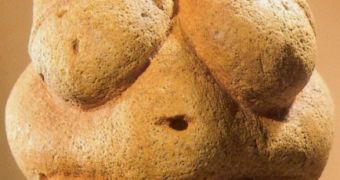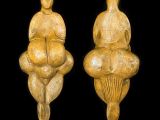If we take a look at our closest relatives, we will find that chimps are highly promiscuous: males form brotherhoods inside their group, a fact that impedes them from competing and fighting for mating. That's why also females are not impeded from mating with any male. If we look at bonobo (also wrongly called pygmy chimp), the promiscuity goes to the highest grounds and these animals can make any porn star blush when it comes to sex activity.
But we arrogantly assume that our species is built for monogamy. A new research into Stone Age humans has come with proofs that, far from simply aiming at reproduction, they had sex just to enjoy it. What seem to be modern practices, ranging from bondage to group sex, transvestism and the use of sex toys were common in primitive societies as a way of building up bonds inside the group, just like in bonobo.
The review made by Timothy Taylor, a reader in archeology at Bradford University shows that a 30,000-year-old statue of a naked woman, the Venus of Willendorf and a similarly old stone phallus discovered in a German cave provide the earliest direct evidence that Ice Age sex was more than reproduction. He investigated dozens of archaeological finds and scientific studies.
Many Ice Age figurines, made of flint, bone, ivory and tooth, depict women with enlarged breasts and buttocks (clear female sexual traits) and were used perhaps as sex toys, especially during long hunting sessions. Most of them are 30-15,000 years old and are called "Venus", from the Roman goddess of beauty and fertility. Many of these carvings do not even have a face (!), thus the "artist" emphasized their sexual side...
"The widespread lay belief that sex in the past was predominantly heterosexual and reproductive can be challenged. Monogamy only became established as hunter-gatherer societies took up agriculture and settled in houses, allowing the social roles of men and women to become more fixed," said Taylor.
"So much evolutionary theory promotes the idea that humans, particularly women, are preprogrammed for monogamy, but that is often simply overlaying science on a pre-existing view of society," said Petra Boynton, a relationship counselor and health lecturer at University College, London.
"The human attitude to sex arose from the complex interaction of physical and mental development. By comparison with modern humans, who appeared about 300,000-100,000 years ago, apes have tiny male genitals, no female breasts and are hairy. But they are easily able to distinguish the sexes because males can weigh up to three times as much as females." said Taylor.
In humans, the size in sexual dimorphism is more attenuated.
"Prominent male genitals and female breasts developed to aid recognition of the opposite sex in creatures of similar size and shape. The similarity in size, combined with the ease of face-to-face sex, allowed intercourse to become a vital part of social interaction, communication and inventiveness," said Taylor.

 14 DAY TRIAL //
14 DAY TRIAL // 
